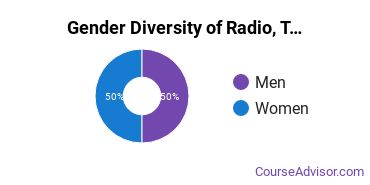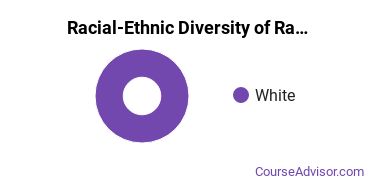Radio, Television & Digital Communication at Pennsylvania Highlands Community College
Pennsylvania Highlands is located in Johnstown, Pennsylvania and approximately 2,456 students attend the school each year.
Want to know more about the career opportunities in this field? Check out the Careers in Radio, Television & Digital Communication section at the bottom of this page.
Featured Pennsylvania Highlands Community College Programs
Learn about start dates, transferring credits, availability of financial aid, and more by contacting the universities below.
BA in Communication - New Media
Explore the digital frontier as it relates to today's communications strategies with this specialized online bachelor's from Southern New Hampshire University.
MS in Marketing - New Media & Communications
Explore how emerging media impacts the study of culture, relationships and messages with this online master's from Southern New Hampshire University.
Pennsylvania Highlands Radio, Television & Digital Communication Degrees Available
- Associate’s Degree in Digital Communication
Featured Pennsylvania Highlands Community College Programs
Learn about start dates, transferring credits, availability of financial aid, and more by contacting the universities below.
BA in Communication - New Media
Explore the digital frontier as it relates to today's communications strategies with this specialized online bachelor's from Southern New Hampshire University.
MS in Marketing - New Media & Communications
Explore how emerging media impacts the study of culture, relationships and messages with this online master's from Southern New Hampshire University.
Pennsylvania Highlands Radio, Television & Digital Communication Rankings
Digital Communication Student Demographics at Pennsylvania Highlands
Take a look at the following statistics related to the make-up of the digital communication majors at Pennsylvania Highlands Community College.
Pennsylvania Highlands Radio, Television & Digital Communication Associate’s Program

The majority of those who receive an associate's degree in digital communication at Pennsylvania Highlands are white. Around 100% fell into this category, which is below average for this degree.
The following table and chart show the race/ethnicity for students who recently graduated from Pennsylvania Highlands Community College with a associate's in digital communication.

| Race/Ethnicity | Number of Students |
|---|---|
| Asian | 0 |
| Black or African American | 0 |
| Hispanic or Latino | 0 |
| White | 4 |
| International Students | 0 |
| Other Races/Ethnicities | 0 |
Concentrations Within Radio, Television & Digital Communication
Radio, Television & Digital Communication majors may want to concentrate their studies in one of these areas. The table shows all degrees awarded in this field awarded for all degree levels at Pennsylvania Highlands Community College. A concentration may not be available for your level.
| Concentration | Annual Degrees Awarded |
|---|---|
| Other Radio, Television, & Digital Communication | 10 |
Related Majors
Related Programs
Learn about other programs related to Pennsylvania Highlands Community College that might interest you.
MS in Marketing - New Media & Communications
Explore how emerging media impacts the study of culture, relationships and messages with this online master's from Southern New Hampshire University.
Careers That Digital Communication Grads May Go Into
A degree in digital communication can lead to the following careers. Since job numbers and average salaries can vary by geographic location, we have only included the numbers for PA, the home state for Pennsylvania Highlands Community College.
| Occupation | Jobs in PA | Average Salary in PA |
|---|---|---|
| Managers | 11,060 | $126,290 |
| Producers and Directors | 2,700 | $76,050 |
| Communications Professors | 1,280 | $76,720 |
| Radio and Television Announcers | 1,200 | $38,980 |
| Film and Video Editors | 380 | $61,920 |
References
*The racial-ethnic minorities count is calculated by taking the total number of students and subtracting white students, international students, and students whose race/ethnicity was unknown. This number is then divided by the total number of students at the school to obtain the racial-ethnic minorities percentage.
More about our data sources and methodologies.

